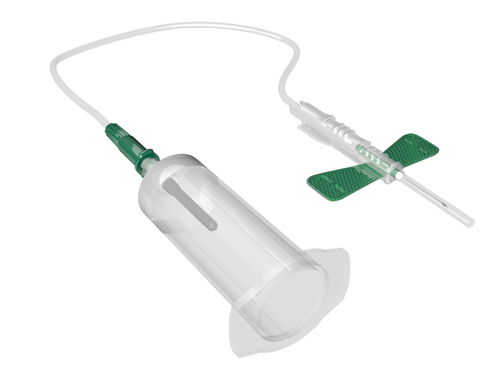Needlestick prevention devices to lower healthcare workers’ exposure to biological risk
 The importance of implementing Needlestick Prevention Devices (NPDs) has been touched upon in several instances, especially since Directive 2010/32/EU was implemented into national law.
The importance of implementing Needlestick Prevention Devices (NPDs) has been touched upon in several instances, especially since Directive 2010/32/EU was implemented into national law.
Occupational exposure to biological risk is a frequent and potentially severe event which concerns millions of healthcare workers in the whole world. Percutaneous exposure is the most common: it occurs in 75% of cases (while mucous membrane contact accounts for 25% of cases)..
The effectiveness of NPDs has been confirmed by several studies, such as the following examples.
A study carried out by Jagger in 1998 at 6 different hospitals for 15 months found out that 30% of percutaneous injuries were potentially preventable if safer devices had been used. In France a study that was carried out in 32 hospitals between 1999 and 2000 (GERES) saw a decrease of 75% in accidents.
Similar studies were carried out in Spain and in the UK and they reached similar conclusions: Spain saw a decrease of 93% in accidental sharps injuries while the UK reported a decline of 72% (and a decrease of 88% for accidental sharps injuries during venipuncture/injection).
Data from Canada and the US are encouraging. Introducing NPDs gradually in 87 monitored hospitals in the US reduced accidental sharps injuries by 59% for phlebotomy needles and by 53% for I.V. catheter stylets. In Canada using NPDs reduced accidental sharps injuries by 80%.
When it comes to epidemiological analysis carried out in Italy, the SIROH project (Italian Study Group on Occupational Risk of HIV Infection and other bloodborne pathogens ) is a point of reference at a national level. The SIROH project has been going on for 25 years thanks to volunteers in about one hundred hospitals in Italy. It monitors occupational exposure to biological risk and gives a great contribution in terms of prevention. The data gathered by SIROH shows that using NPDs, together with correct information, training and awareness-raising initiatives, is effective in reducing occupational exposure to sharps injuries and its effects are constant in time.
Implementing NPDs is not enough to ensure an effective reduction in accidents in the healthcare setting, though: providing adequate training for the workers who use the devices is equally important.
Furthermore, the effectiveness and safety of any treatment or diagnostic action shouldn't be affected by the implementation of NPDs. The patient's wellbeing and safety is always the ultimate goal, together with the healthcare professional's safety.
Healthcare institutions are encouraged to implement a management and organisational plan, much like the Phase Group did at a national level, assessing the benefits of introducing NPDs against the risk of accidents. These are benefits for the workers' health and safety but they also represent a financial gain –it is estimated that 400€ can be saved for each sharps injury that is prevented, while annual figure for accidents is 70 thousand. Looking at this data, what is more expensive then, the implementation of NPDs or the accidents themselves? We can all draw our own conclusions...
Staff who work in this area should undergo specific health monitoring.
MEASURES ON HANDLING SHARPS: they are regulated by the Health Ministry Decree 28/09/90 et seq. Article 2 states: "disposal of sharps, used on any patient, shall be carried out using appropriate precautions to avoid accidental injuries. In particular, needles, scalpel blades and other disposable sharps shall never be removed from syringes or other tools and shall never be recapped. They shall be put in the appropriate container for disposal."
All healthcare workers should take measures to prevent accidental sharps injuries, when using, cleaning and disposing of sharps.
Using only safety devices, prescribing blood tests only when really necessary and keeping sharps handling to the minimum are highly recommended.
MEASURES TO BE TAKEN IN CASE OF AN ACCIDENT: when an accidental sharps injury to the hand occurs, the first pair of gloves shall be disposed of in the patient's room. The worker should then leave the filter zone, dispose of the second pair of gloves, clean his/her hands thoroughly and disinfect his/her wound.
All accidents should immediately be reported to the doctor in charge of monitoring and carrying out the follow-up procedures.
Isolating healthcare workers who are at risk, especially when it comes to highly dangerous viruses such as Ebola, is the key to avoid exposure. Thus, taking all the preventive measures and using correctly personal protective equipment is vital and so is taking the utmost care in dressing, undressing and disposing of disposable devices. Using safety devices is therefore even more important, as they eliminate the risk of accidental sharps injuries and increase safety for healthcare workers.




